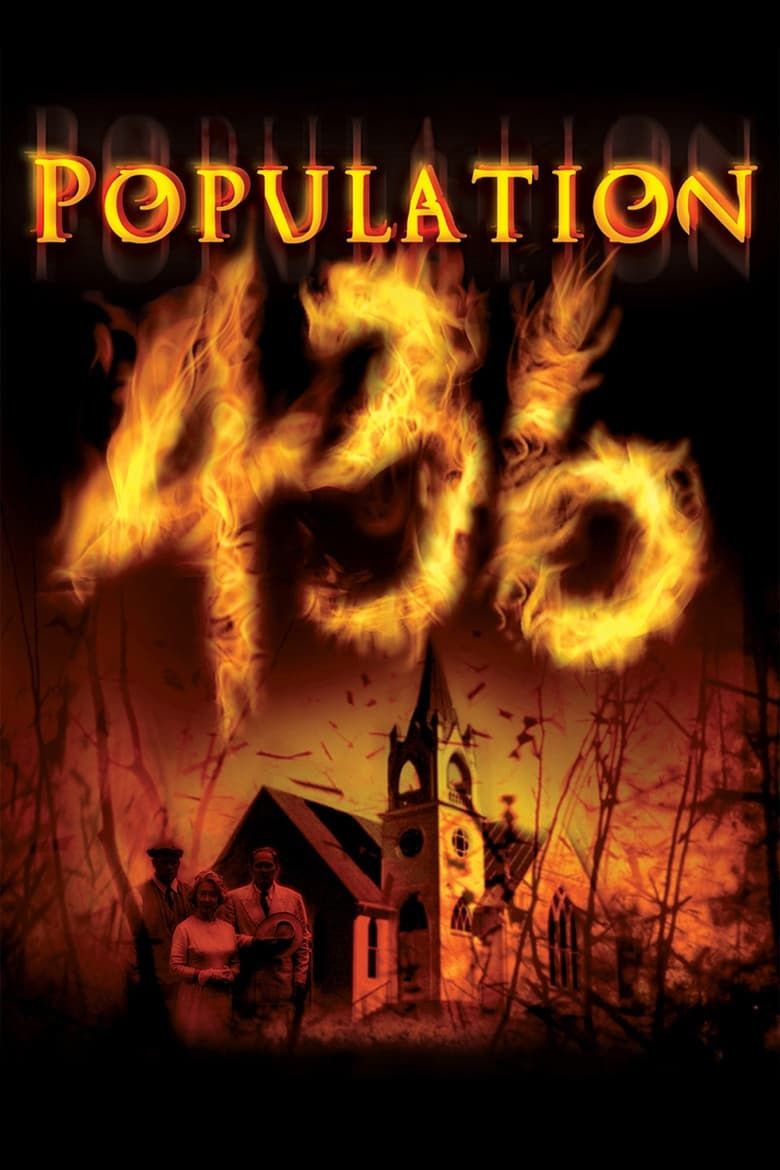Stephen King stories have this indescribable sense of hazy nostalgia that makes it often easy to pinpoint when something is inspired by him. He has this innate ability to craft thematically rich ideas but give them a sense of focus through utilizing a close-knit community. His stories often take place in a singular town and feature an eclectic yet limited cast of characters; this model often includes a tiny, quaint town and looks at the devastating consequences of one particular evil. Of course, not every story fits into this mold, but it is a distinct style that can be associated with King.
Population 436 shares all the traits of a Stephen King story, showing an outsider trapped in an isolated community that has strong religious beliefs and ritualistic customs. Tonally, the movie is slow and patient, so it doesn’t rely on shock value but rather on this underlying feeling of dread and discomfort. Throughout, nothing is confirmed as fact, which leaves the audience to toy between what they believe and what is a result of the town’s methods of socialization and pressures.
‘Population 436’ Fits the Strange Small Town Trope
Population 436 is solely based in the town of Rockwell Falls, on the rural outskirts of society, where the population has remained consistent for decades. Steve Kady (Jeremy Sisto) is a man who works for the Census Bureau and is sent to the town and begins to question why the number of residents hasn’t changed. As he begins to interview those that live there, he becomes more concerned with their strange and seemingly rehearsed responses. From a doctor who seemingly has no qualifications to a classroom where the students are reciting unrecognizable scripture, things are troubling to say the least. On the surface, Rockwell Falls looks ordinary, but it is these subtle uncertainties that create the looming feeling of dread.
Sisto perfectly presents Kady as a man who is polite in his doubt, which makes him an ideal neutral outsider. He forms a bond with Deputy Bobby Caine (Fred Durst) and seems to make an effort to integrate himself during his visit. Unusually, his authoritative position doesn’t only give him access, which means the movie doesn’t rely heavily on him sneaking into buildings, but also gives him a sense of knowledge and purpose. So, his arrival feels believable, and his consequent questioning comes from a democratic place of worry. Since his job centers around population counting, the lack of change is an occupational concern—this allows the audience to trust his perspective and makes his slow unraveling much more evocative.
Classic Stephen King Themes Are All Over ‘Population 436’
Stephen King often uses supernatural horrors to tackle real issues, forcing the reader or viewer to confront their own beliefs and potential situational responses. Stories such as The Mist and Needful Things utilize large casts and encourage the audience to examine the various participants and decipher where they stand on the decisions made before finally revealing the truth. Population 436 uses this foundational approach, as it doesn’t give any definite answer until the final moments of the movie. It asks the viewer why so many people believe in a singular truth even when shown the extremity of rituals, such as shock therapy for those who doubt the community and a sacrificial lottery when the population reaches higher than 436.
The slow pacing gives Kady the opportunity to explore every corner of the town, choosing to focus on his interactions with the townsfolk over action or drama. Through this, Population 436 is purposefully ordinary, so when something slightly unusual is presented, it is much more off-putting to the audience. There is this sense of foreboding that something is clearly wrong, but the movie doesn’t overtly reveal what it is, so the audience just can’t quite place where reality is. Instead, the movie forces the audience to uncomfortably sit within the narrative, unable to leave, replicating the entrapment alluded to by the citizens of Rockwell Falls.

Related
Mike Flanagan’s ‘Midnight Mass’ Connects to a Stephen King Horror Miniseries
Pray you don’t live in one of these towns.
The community presented is grounded in realism, yet everyone speaks with this tinge of artificiality, almost as if they have been brainwashed and are reading a script. Yet, no one seems aware of the truth, and the population appers to be blissfully happy with their existence—this placidity contrasts greatly with the increased agitation of Kady. Population 436 creates this truly ominous atmosphere where the truth is never quite clear; it replicates the feeling of Stephen King, and fans of the horror author will love it.

Population 436
- Release Date
-
July 4, 2006
- Runtime
-
88 minutes
- Director
-
Michelle MacLaren
-

-

-

-

Peter Outerbridge
Deputy Hecker

















